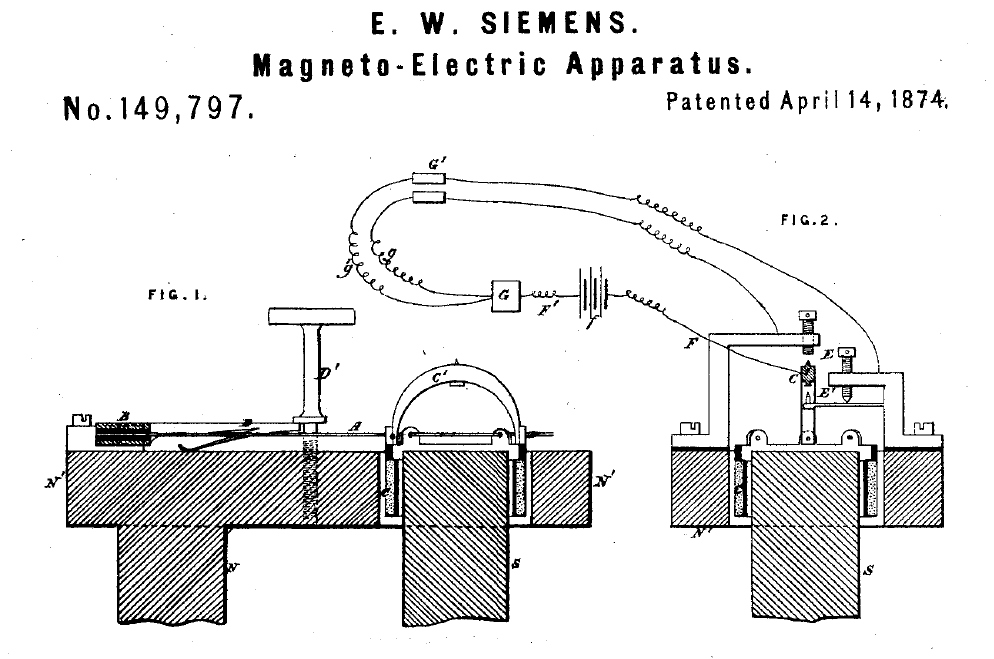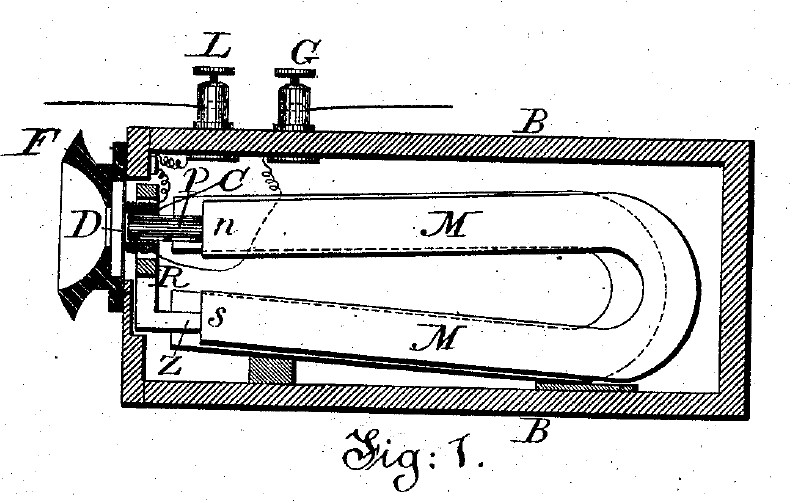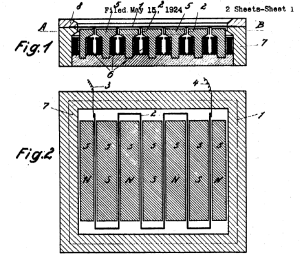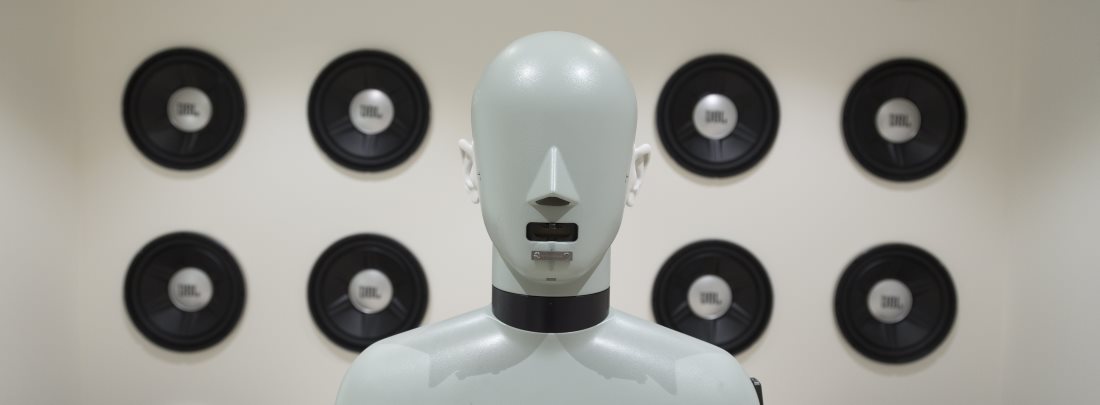The moving coil loudspeaker is without doubt the most common electroacoustic transducer in use. It consists of a circular coil suspended to move freely in a radial magnetic field. This transducer principle was first described by Ernst W. Siemens in his 1874 patent. He describes his transducer as a means for “obtaining the mechanical movement of an electrical coil from electrical currents transmitted through it.” He also mentions that the coil could be used to move visible or audible signals, but he had obviously nothing more elaborate in mind than a bell or buzzer.

In November 1877, Charles Cuttriss and Jerome Redding filed US patent 242816 for a moving coil transducer. It used a flat diaphragm rigidly suspended at the edge, but free to move at the centre, excited by a coil moving in a magnetic field generated by a permanent magnet. A few weeks later, two patent applications were filed on behalf of Siemens in Germany and England, describing a moving coil device with a permanent magnet, circular voice coil, and a diaphragm. The diaphragm was made from parchment, and in the general form of the frustum of a cone, but with an exponential flaring profile.

Many of the features of modern moving-coil loudspeakers were now in place, and more were to come. In 1898, Oliver Lodge patented non-magnetic spacers for the air gap, and in 1909, Pollák patented a voice coil cantering spider. Other inventors supplied various forms of compliant suspensions for the base of the cone.
One of the uses for the moving coil transducer was a so-called telephone relay, in which the moving coil worked together with a carbon microphone to produce a crude amplifier. Before the invention of the vacuum tube triode by de Forest in 1907, this was the only way to obtain electrical amplification of audio signals. AT&T acquired the triode patent, and H. D. Arnold of the Western Electric developed it into a reliable high-quality amplifier. It was put into service in the first transcontinental telephone circuit in January 1915.
The moving coil transducer is inherently much more linear, especially for large signals, than many other transducer mechanisms. The direct radiating moving coil transducer is, however, not very efficient. With the invention and commercialization of the vacuum tube amplifier, time was ripe for exploiting this principle for loudspeakers, but not much happened until the mid-20s.
Various moving conductor mechanisms
In 1909, Peter L. Jensen left Denmark for the United States to supervise installation of radio equipment based on the technology of Valdemar Poulsen. Here he met Edwin S. Pridham, and in 1911 they set up a laboratory in Napa to experiment with wireless equipment. While watching the operation of a high-speed telegraph printer invented by Poulsen, the thought struck them that the moving wire in the printer could perhaps also respond to the rapid fluctuations in speech signals. They substituted a thicker wire for the thin one in Poulsen’s printer, coupled it to a diaphragm by the means of a match, and connected it to a microphone and a battery. The results were good, so they applied for a patent, which was denied, since the principle was not as new as they had believed. But since it had not been exploited commercially before, they got their specific implementation patented. They were not able to interest the telephone companies, but Jensen’s wife’s uncle suggested they connect a horn to it, and use it for public announcements. Their first mock-up was a system of 25 watts output, more powerful than any in existence at the time. Understandable speech could be heard over a mile away. The loudspeaker was named the Magnavox. The first public demonstration (unless one considers the numerous tests at Napa, where the loudspeaker could be heard over large distances) was December 10, 1915, in the Golden Gate Park. On Christmas Eve the same year, an estimated crowd of 100,000 heard Christmas carols over the system.

In Germany, other loudspeaker mechanisms were developed, that are closely related to the moving coil transducer. One of them is the ribbon loudspeaker, patented in 1924 by Edwin Gerlach of Siemens & Halske. This is the loudspeaker version of the ribbon microphone described in Part 3. Gerlach also patented a moving coil mechanism where the diaphragm was a corrugated rectangular ribbon, having a single turn voice coil in the form of a ribbon running around the edge that also served to stiffen the diaphragm.
Another German moving coil loudspeaker that deserves notice is the Blatthaller. It consists of a large, corrugated aluminium diaphragm driven by a conductor zigzagging between multiple magnet poles. It was invented by Hans Riegger of Siemens and Halske in 1923, and used extensively for public address systems into the 30s, when large sound systems were in demand at certain public gatherings in Germany. The large version, the Riesenblatthaller, could be heard over distances of 20km.
All images from published patents




